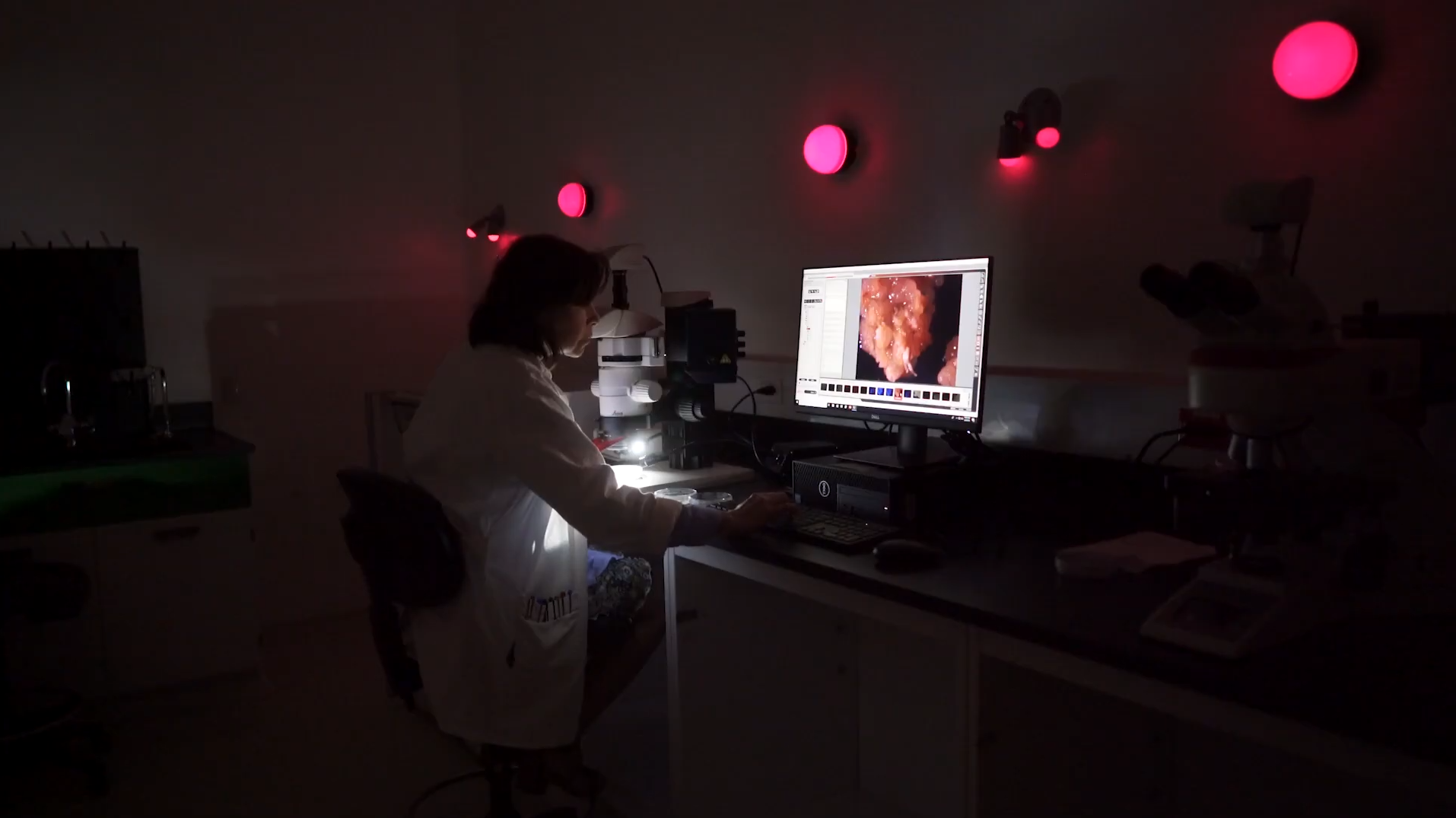A diverse group of agriculture, food security, environment and science journalists gathered in Saskatoon, Canada recently for an intensive course in innovative wheat research, interviews with top international scientists and networking with peers.
The occasion was the International Wheat Congress (IWC), which convened more than 900 wheat scientists and researchers in Saskatoon, in Canada’s biggest wheat-growing province, Saskatchewan, to discuss their latest work to boost wheat productivity, resilience and nutrition.
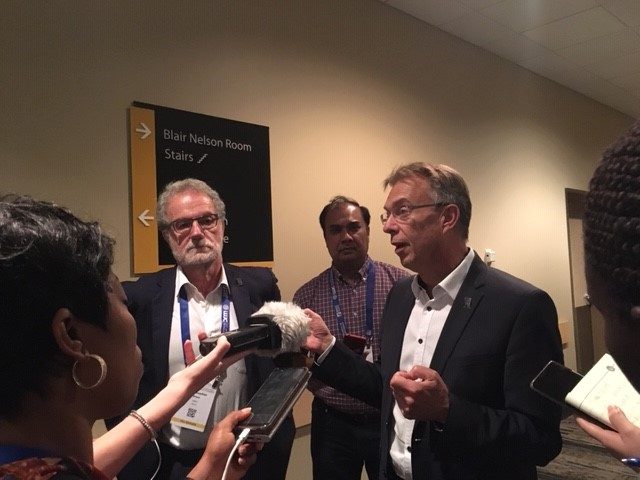
The seven journalists were part of a group of 11 who won a competitive sponsorship offered by the CGIAR Research Program on Wheat (WHEAT). Seven journalists attended the conference, while another four followed the proceedings and activities from home. The ten-day immersive training included multiple daily press briefings with top scientists in climate change modeling and resilience testing, innovative breeding techniques, analysis and protection of wheat diversity and many more topics, on top of a full schedule of scientific presentations.
“The scientists were so eager to talk to us, and patient with our many questions,” said Nkechi Isaac, from the Leadership newspaper group in Nigeria. “Even the director general of [the International Maize and Wheat Improvement Center] CIMMYT spoke with us for almost an hour.”
“It was a pleasant surprise for me.”
The journalists, who come from regions as diverse as sub-Saharan Africa and East Asia, offered support and encouragement from their travel preparations though their time in Saskatoon and beyond — sharing story ideas, interview and site visit opportunities, news clips and photos through a WhatsApp group.
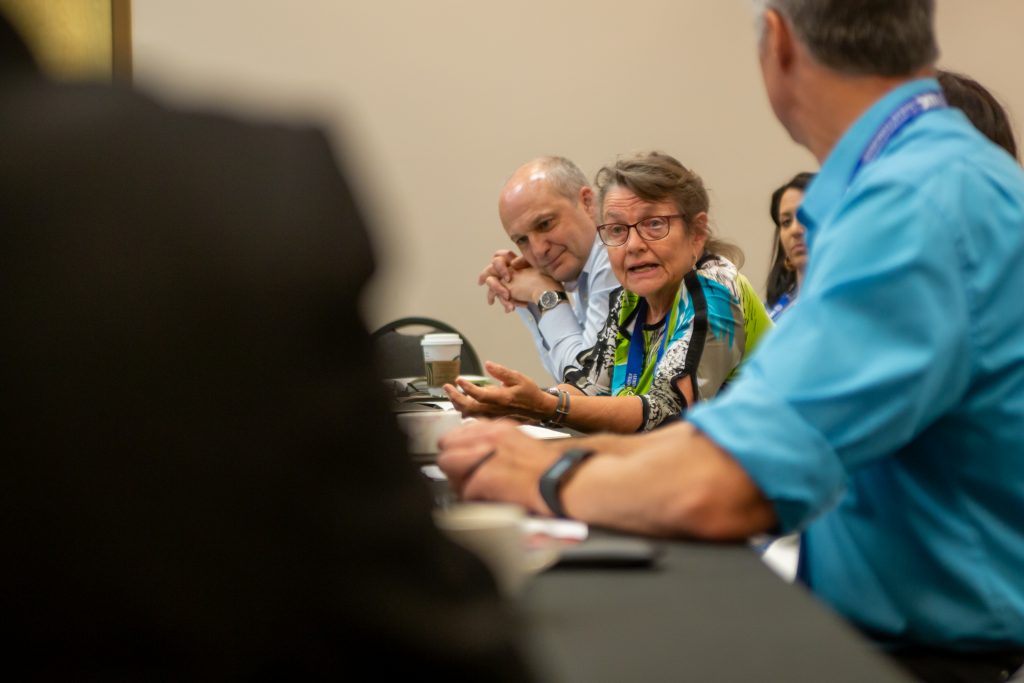
“It is really helpful to be connected to colleagues around the world,” said Amit Bhattacharya of the Times of India. “I know we will continue to be a resource and network for each other through our careers.”
The week wasn’t all interviews and note-taking. The journalists were able to experience Saskatchewan culture, from a tour of a wheat quality lab and a First Nations dance performance to a visit to a local wheat farm, and even an opportunity to see Saskatoon’s newest modern art gallery.
The media sponsorship at IWC aimed to encourage informed coverage of the importance of wheat research, especially for farmers and consumers in the Global South, where wheat is the main source of protein and a critical source of life for 2.5 billion people who live on less than $2 a day.
The group also spoke with members of the many coalitions that facilitate the collaboration that makes innovative wheat research possible, including the International Wheat Yield Partnership (IWYP), the Heat and Drought Wheat Improvement Consortium (HeDWIC) and the G20-organized Wheat Initiative.
“This is the first time we’ve invested this heavily in journalist training,” said WHEAT program director Hans Braun. “We think the benefits – for the journalists, who gained a greater understanding of wheat research issues, and for developing country audiences, who will be more aware of the importance of improving wheat –– are worth it.”
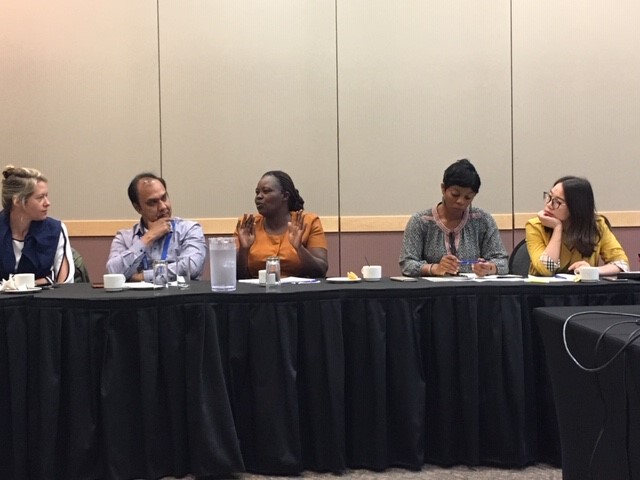
A roundtable discussion with peers from Canadian news organizations and seasoned science communications professionals and a networking breakfast with CIMMYT scientists provided platforms for a candid exchange on the challenges and opportunities in communicating wheat science in the media.
A common refrain was the importance of building relationships between scientists and media professionals – because wheat science offers dramatic stories for news audiences, and an informed and interested public can in turn lead to greater public investment in wheat science. The journalists and scientists in Saskatoon have laid a solid foundation for these relationships.
The sponsored journalists are:
Amit Bhattacharya: Senior Editor at The Times of India, New Delhi, and a member of the team that produces the front page of India’s largest English daily. He writes on Indian agriculture, climate change, the monsoon, weather, wildlife and science. A 26-year professional journalist in India, he is a Jefferson Fellow on climate change at the East-West Center, Hawaii.
Emmanuelle Landais: Freelance journalist based in Dakar, Senegal, currently reporting for Deutsche Welle’s radio service in English and French on the environment, technology, development and youth in Africa. A former line producer for France 24 in Paris and senior environment reporter for the daily national English newspaper Gulf News in Dubai, she also reports on current affairs for the Africalink news program, contributes to Radio France International’s (RFI) English service, and serves as news producer for the Dakar-based West Africa Democracy Radio.
Julien Chongwang: Deputy Editor, SciDev.Net French edition. He is based in Douala, Cameroon, where he has been a journalist since 2002. Formerly the editor of the The Daily Economy, he worked on the French edition of Voice of America and Morocco economic daily LES ECO, and writes for Forbes Africa, the French edition of Forbes in the United States.
Lominda Afedraru: Science correspondent at the Daily Monitor newspaper, Uganda, part of the Nation Media Group. A journalist since 2004, she also freelances for publications in the United States, UK, Kenya and Nigeria among others and has received fellowships at the World Federation of Science Journalists, Biosciences for Farming in Africa courtesy of University of Cambridge UK and Environmental Journalism Reporting at Sauti University, Tanzania.
Muhammad Amin Ahmed: Senior Correspondent, Daily Dawn in Islamabad, Pakistan. He has been a journalist for more than 40 years. Past experience includes working at the United Nations in New York and Pakistan Press International. He received a UN-21 Award from former U.N. Secretary General Kofi Annan (2003).
Muhammad Irtaza: Special Correspondent with Pakistan’s English daily The Nation at Multan. A 10-year veteran journalist and an alumnus of the Reuters Foundation, he also worked as a reporter with the Evansville Courier and Press in Indiana, United States. He is an ICFJ-WHO Safety 2018 Fellow (Bangkok), Asia Europe Foundation Fellow (Brussels), and a U.S.-Pakistan Professional Partnership in Journalism Program Fellow (Washington). He teaches mass communications at Bahauddin Zakariya University Multan.
Nkechi Isaac: Deputy Editor, Leadership Friday in Nigeria. She is also the head, Science and Technology Desk of the Leadership Group Limited, publishers of LEADERSHIP newspapers headquartered in Abuja, Nigeria. She is a Fellow of Cornell University’s Alliance for Science.
Reaz Ahmad: Executive Editor of the Dhaka Tribune, Bangladesh’s national English newspaper. A journalist for 30 years, he is a Cochran Fellow of the U.S. Department of Agriculture and an adjunct professor of University of Dhaka (DU) and Independent University, Bangladesh.
Rehab Abdalmohsen: Freelance science journalist based in Cairo, Egypt who has covered science, health and environment for 10 years for such websites as the Arabic version of Scientific American, SciDev.net, and The Niles.
Tan Yihong: Executive Deputy Editor-in-Chief, High-Tech & Commercialization Magazine, China. Since 2008, she has written about science particularly agriculture innovation and wheat science. She has attended several Borlaug Global Rust Initiative (BGRI) Technical Workshops. In Beijing, she helped organize a BGRI communication workshop and media outreach.
Tony Iyare: Senior Correspondent, Nigerian Democratic Report. For more than 30 years, he has covered environment, international relations, gender, media and public communication. He has worked as a stringer for The New York Times since 1992, and freelanced for the Paris-based magazine, The African Report and the U.N. Development Programme publication Choices. He was columnist at The Punch and co-authored a book: The 11-Day Siege: Gains and Challenges of Women’s Non-Violent Struggles in Niger Delta.
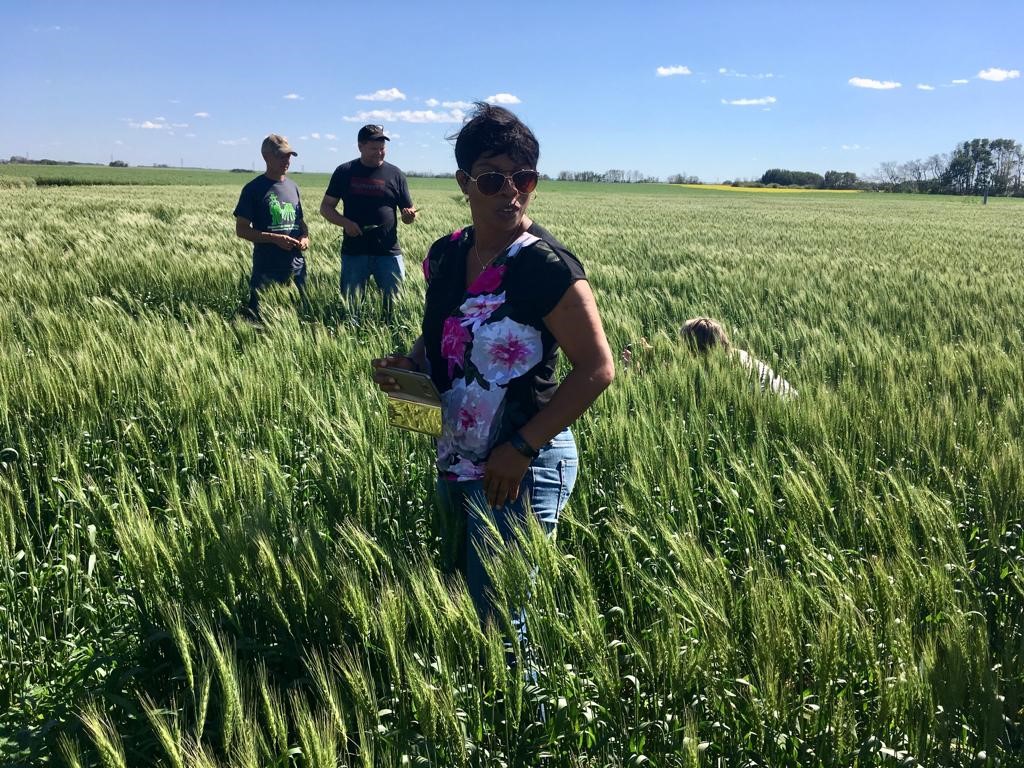
The CGIAR Research Program on Wheat (WHEAT) is led by the International Maize and Wheat Improvement Center (CIMMYT), with the International Center for Agricultural Research in the Dry Areas (ICARDA) as a primary research partner. Funding comes from CGIAR, national governments, foundations, development banks and other agencies, including the Australian Centre for International Agricultural Research (ACIAR), the UK Department for International Development (DFID) and the United States Agency for International Development (USAID).
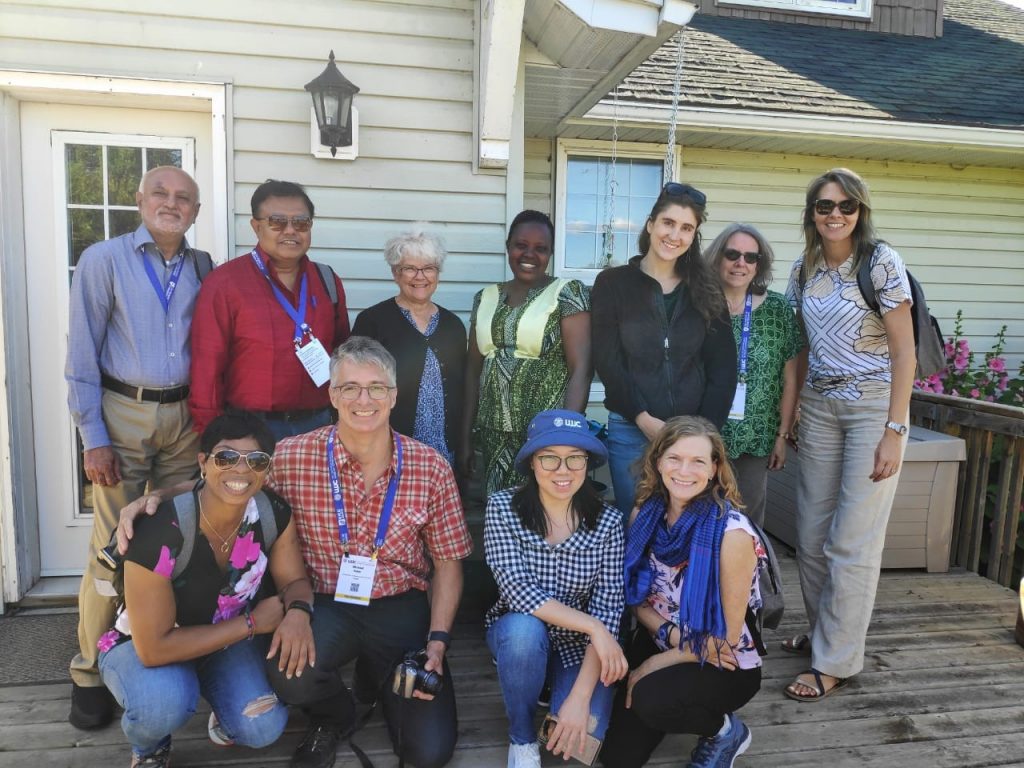
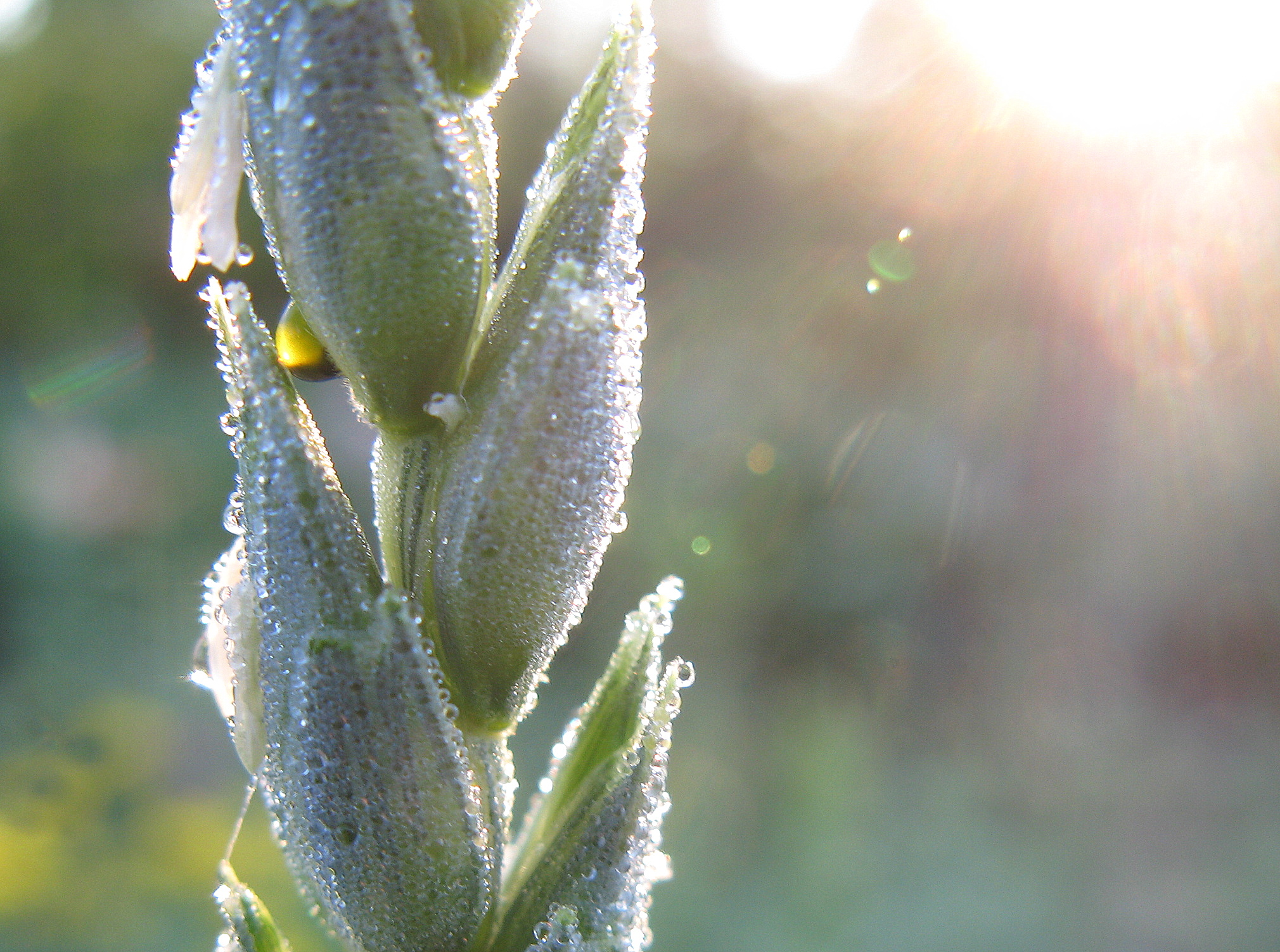
 Innovations
Innovations 